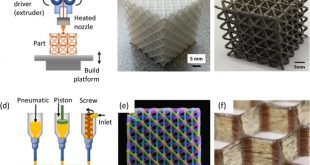In the ever-evolving landscape of defense operations, staying ahead of the curve is crucial for maintaining national security. Command, control, communications, computers, intelligence, surveillance, and reconnaissance (C4ISR) systems form the backbone of modern military operations. However, the challenges posed by the vast amounts of data, computational limitations, and the need …
Read More »Biomimetic Robotic Fish Inspire Navies to Unlock the Depths with Agile and Maneuverable Unmanned Underwater Vehicles
The vast expanse of the underwater world holds many mysteries and challenges for naval forces. As technology advances, navies are increasingly turning to unmanned underwater vehicles (UUVs) to explore and conquer the depths. Unmanned underwater vehicles (UUVs) are becoming increasingly important for a variety of military applications, including mine detection, …
Read More »Driving into the Future: Exploring the Latest Radar Technologies Revolutionizing Autonomous Vehicles”
Autonomous vehicles have taken the automotive industry by storm, promising a future where cars navigate themselves, reducing accidents and congestion while enhancing transportation efficiency. These vehicles have the potential to revolutionize transportation, making it safer, more efficient, and more accessible. Autonomous control of a vehicle makes driving safer and comfortable. …
Read More »Photonic Blockchains: More Energy-Efficient and Scalable Than Traditional Blockchains
Cryptocurrencies are digital currencies created using encryption algorithms. These alternative currencies require a blockchain — a type of digital ledger that records information such as transactions in a way that is difficult or impossible to change or hack. Blockchain is a decentralized and distributed ledger technology that allows multiple participants …
Read More »Revolutionizing Driverless Cars: Exploring Multisensor Fusion Algorithms for Optimal Hardware and Software Design
The emergence of driverless cars has brought about a paradigm shift in the automotive industry. These vehicles have the potential to revolutionize transportation, making it safer, more efficient, and more accessible to everyone. promising a future of safer roads, increased efficiency, and enhanced mobility. For a deeper understanding of driverless …
Read More »Beyond the Green Canopy:Synthetic Aperture Radar (SAR) and its Foliage Penetration Capabilities
When we gaze at the lush green canopies of forests, it’s easy to assume that what lies beneath remains hidden from our view. However, thanks to technological advancements in remote sensing, Synthetic Aperture Radar (SAR) has emerged as a powerful tool capable of peering through this dense foliage. In this …
Read More »Unlocking Boundless Possibilities: The Power of Mechanical Metamaterials – Properties, Types, and Applications in Multiple Industries
Innovation knows no bounds, and the world of materials engineering is no exception. Among the most exciting developments in recent years is the emergence of mechanical metamaterials, which are reshaping the way we perceive and utilize materials. With their unique properties, engineered structures, and limitless potential, mechanical metamaterials are unlocking …
Read More »Connecting Supercomputers for Enhanced Computing Power: The Promise of Supercomputer Internet
Supercomputers are some of the most powerful computers in the world. Supercomputers have become an essential tool for researchers and businesses that require massive computing power to process large amounts of data and perform complex simulations. They are used for a variety of tasks, including weather forecasting, climate modeling, and …
Read More »Transforming Healthcare with Industry 4.0 Technologies: A Healthcare 4.0 Overview
The fourth industrial revolution, also known as Industry 4.0, is a period of rapid technological change that is transforming the way we live and work. This revolution is being driven by the convergence of a number of technologies, including artificial intelligence (AI), the Internet of Things (IoT), and big data …
Read More »Enhancing Warfighter Protection: DARPA’s PPB prgram for Lightweight Personal Protective Equipment (PPE) against Chemical and Biological Threats
The safety and well-being of military personnel in high-risk environments have always been a top priority. In recent years, the need for effective personal protective equipment (PPE) has become increasingly critical, especially in the face of chemical and biological (CB) threats. The Defense Advanced Research Projects Agency (DARPA), known for …
Read More » International Defense Security & Technology Your trusted Source for News, Research and Analysis
International Defense Security & Technology Your trusted Source for News, Research and Analysis



